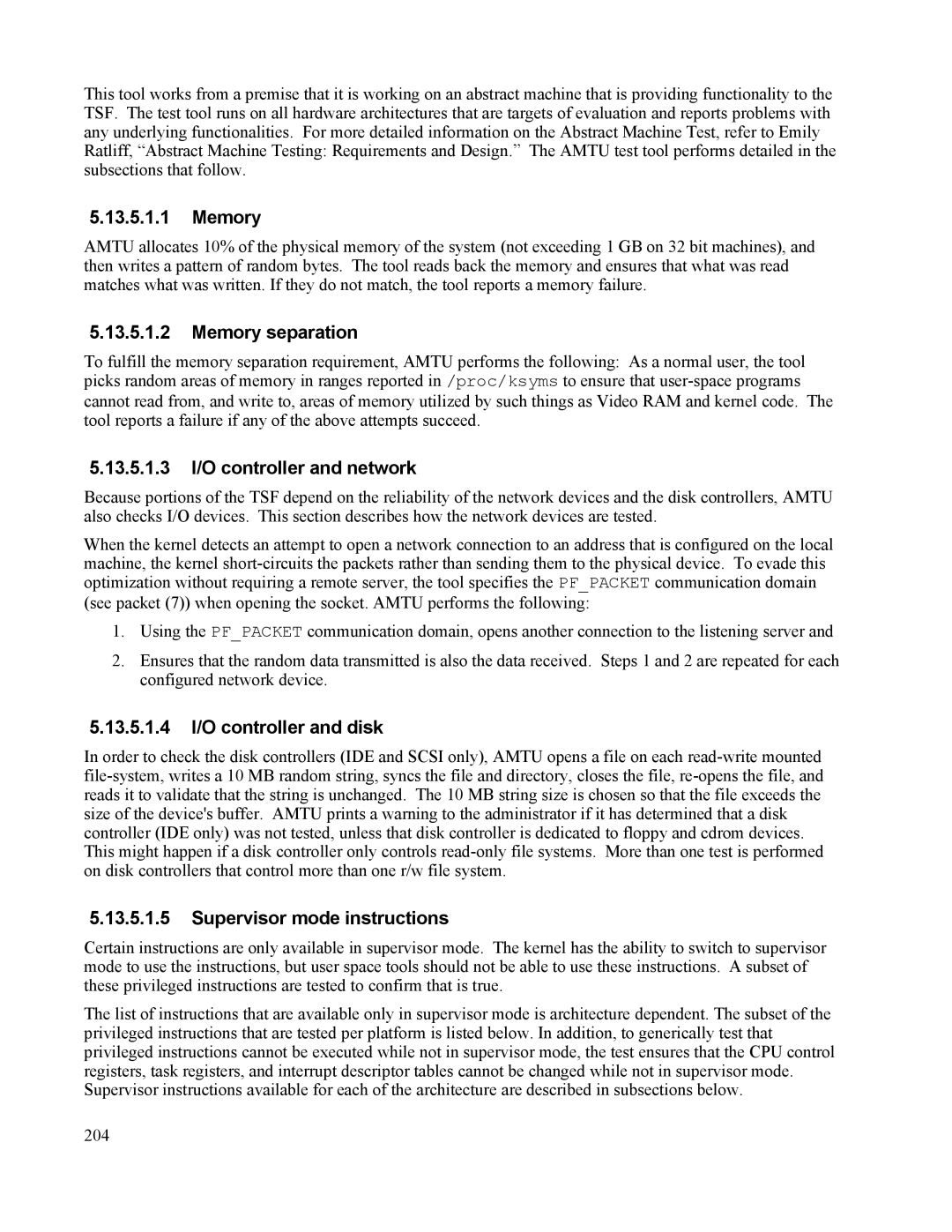This tool works from a premise that it is working on an abstract machine that is providing functionality to the TSF. The test tool runs on all hardware architectures that are targets of evaluation and reports problems with any underlying functionalities. For more detailed information on the Abstract Machine Test, refer to Emily Ratliff, “Abstract Machine Testing: Requirements and Design.” The AMTU test tool performs detailed in the subsections that follow.
5.13.5.1.1Memory
AMTU allocates 10% of the physical memory of the system (not exceeding 1 GB on 32 bit machines), and then writes a pattern of random bytes. The tool reads back the memory and ensures that what was read matches what was written. If they do not match, the tool reports a memory failure.
5.13.5.1.2Memory separation
To fulfill the memory separation requirement, AMTU performs the following: As a normal user, the tool picks random areas of memory in ranges reported in /proc/ksyms to ensure that
5.13.5.1.3I/O controller and network
Because portions of the TSF depend on the reliability of the network devices and the disk controllers, AMTU also checks I/O devices. This section describes how the network devices are tested.
When the kernel detects an attempt to open a network connection to an address that is configured on the local machine, the kernel
1.Using the PF_PACKET communication domain, opens another connection to the listening server and
2.Ensures that the random data transmitted is also the data received. Steps 1 and 2 are repeated for each configured network device.
5.13.5.1.4I/O controller and disk
In order to check the disk controllers (IDE and SCSI only), AMTU opens a file on each
5.13.5.1.5Supervisor mode instructions
Certain instructions are only available in supervisor mode. The kernel has the ability to switch to supervisor mode to use the instructions, but user space tools should not be able to use these instructions. A subset of these privileged instructions are tested to confirm that is true.
The list of instructions that are available only in supervisor mode is architecture dependent. The subset of the privileged instructions that are tested per platform is listed below. In addition, to generically test that privileged instructions cannot be executed while not in supervisor mode, the test ensures that the CPU control registers, task registers, and interrupt descriptor tables cannot be changed while not in supervisor mode. Supervisor instructions available for each of the architecture are described in subsections below.
204
